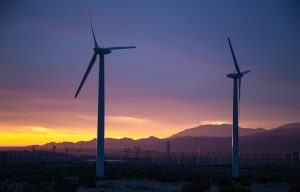Varied Resource Portfolios to Clean up California’s Grid

If music has taught us nothing else, it is that more is better. Three Dog Night taught us that “one is the loneliest number,” the Beatles taught us that we need help from our friends to get by, and Rob Base and DJ E-Z Rock reminded us that “it takes two to make a thing go right.”
Those lyrics apply just as easily to our electric grid. That’s because on the grid, it is best to have a bigger, varied group of resources.
Through the Integrated Resource Plan proceeding, the California Public Utilities Commission is requiring California’s big three utilities – Pacific Gas & Electric, Southern California Edison, and San Diego Gas & Electric – to create energy portfolios that are balanced, cost-effective, and position the utilities to meet state climate and energy targets. This was codified in SB 350 (De León), which required the Commission and utilities to develop these integrated resource plans (IRPs). Accordingly, the Commission has set forth the following specifications:
- By 2030, meet the greenhouse gas reduction targets set forth in SB 32 (Pavley) – a 40 percent reduction relative to 1990.
- Enable an energy portfolio of 50 percent renewable energy.
- Maintain reliability, strengthen diversity and resilience, and prevent severe bill impacts. In practice, this means the plans must continue to ensure utilities provide enough power at all times to serve their customers while making clean resources – including energy storage and tools like demand response – more of a focus in their energy portfolios. These changes should be cost-effective for customers.
- Prioritize reduction of harmful air pollution and greenhouse gas emissions in disadvantaged communities.
- Widely electrify transportation.
In short, IRPs are required to show a lot of ambition, and their efficacy – or lack thereof – can have a tremendous impact on whether or not California successfully meets its ambitious climate and clean energy goals.
[Tweet “Bigger, Varied Resource Portfolios to Clean up California’s Grid”]
How can California’s utility plans succeed?
Given all these utility plans are set to accomplish, it’s important to get them right. Here are some ideas for how to make them as successful as possible:
- Consider revision of the utility business model: As expressed in the Integrated Distributed Energy Resource (IDER) proceeding, the current planning process is an opportunity for the Commission to re-evaluate (and re-envision) the utility business model. Currently, shareholders make profits based on their investment in infrastructure – this de-incentivizes investment in distributed resources (like home solar and demand response) because they require less utility infrastructure than their “poles and wires” brethren. Encouraging utilities to invest in distributed energy resources will take more than the pilot established by the IDER proceeding. Getting utilities to invest in clean energy will require a “fees-for-services” or performance-based ratemaking model. In a fees-for-services model, the utility would be eligible for a share of profits when connecting customers to third-party distributed energy resource providers. Under a performance-based ratemaking model, the utility would be able to collect profits by reaching of a set of pre-determined metrics.
The procurement process can level the playing field for flexible, clean energy resources.
- Coordinate with other relevant proceedings: The IRP process will be more successful if it draws on learnings from other key proceedings. Acknowledging and integrating important findings from, for example utility electric car pilots, the utility storage mandate, and the IDER proceeding, will only serve to strengthen the final version of the IRPs. Additionally, the IRP proceeding will now include a significant portion of PG&E’s plan to replace Diablo Canyon ─ California’s last nuclear power plant which the utility is proposing to retire and replace with clean energy solutions. This will make it vital for the IRPs to consider the needs that arise from the plant’s closure and how to ensure the power that replaces it is clean and low-cost.
- Focus on disadvantaged communities: Low-income communities are disproportionately burdened by harmful pollution, so utility analyses must correctly pinpoint the areas in their service territories that are most in need of clean energy solutions and then prioritize serving those communities. From there, they can figure out how to cost-effectively deploy clean, distributed resources in those locations.
- Transition away from natural gas reliance: The procurement process can level the playing field for flexible, clean energy resources. This can, in turn, incentivize utilities to move away from using natural gas resources for the traditional, yet increasingly outdated, role they play in our energy system (one of balancing out intermittent resources and meeting high demand). The IRPs should encourage resource mixes capable of cutting harmful carbon pollution while maintaining reliability. This impacts whether and how utilities balance variable electric generating units (i.e. solar panels and wind turbines) with existing and new fast-response gas units.
With these elements, utility IRPs have the potential to create a clean, affordable energy system ─ one that leverages the collective strength of a broad range of clean energy resources from rooftop solar panels to home batteries. With all these tools working together, we can ensure a reliable California grid.
Photo source: Flickr/Tony Webster










